Kesar Makhana Phirni – Saffron Foxnut Pudding

A rich and creamy Indian dessert made with roasted foxnuts (makhana), saffron, and cardamom, Kesar Makhana Phirni is a festive treat perfect for celebrations and special occasions.
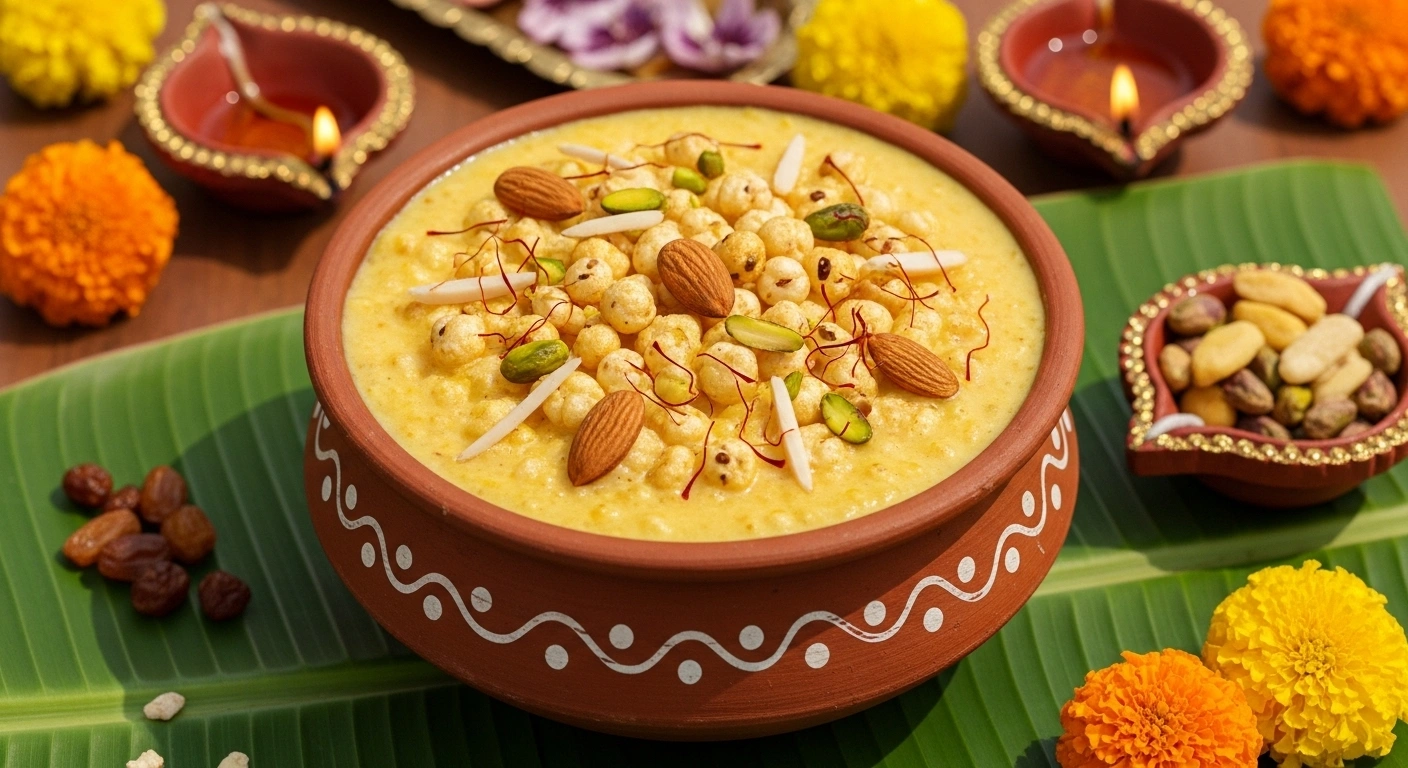
Mamta Pandey liked your Post
Team Kitchen Diaries commented on your Post
Aruna Thapar commented on your Post
Aruna Thapar liked your Post
Team Kitchen Diaries liked your Post
Team Kitchen Diaries liked your Post
Team Kitchen Diaries liked your Post
Mukti Sahay liked your Post
Rashmi Singhania commented on your Post
Aruna Thapar commented on your Post
Aruna Thapar liked your Post
Aruna Thapar commented on your Post
Aruna Thapar liked your Post
Smruti Samparna Nayak liked your Post

A rich and creamy Indian dessert made with roasted foxnuts (makhana), saffron, and cardamom, Kesar Makhana Phirni is a festive treat perfect for celebrations and special occasions.

Kesar Makhana Phirni combines the nutty crunch of roasted foxnuts with the delicate aroma of saffron and cardamom in a slow-cooked, thickened milk base. Traditionally served in clay bowls, this dessert not only delights the taste buds but also carries a royal charm. Chilling the phirni enhances its flavors, making it an ideal make-ahead sweet for festivals like Diwali or Raksha Bandhan.
Roast and Crush the Makhana
Heat ghee in Base Cookware over medium heat.
Add makhana and roast, stirring frequently, until crisp.
Remove from heat and let cool.
Transfer roasted makhana to a ziplock bag, seal, and crush coarsely with a rolling pin. Set aside.
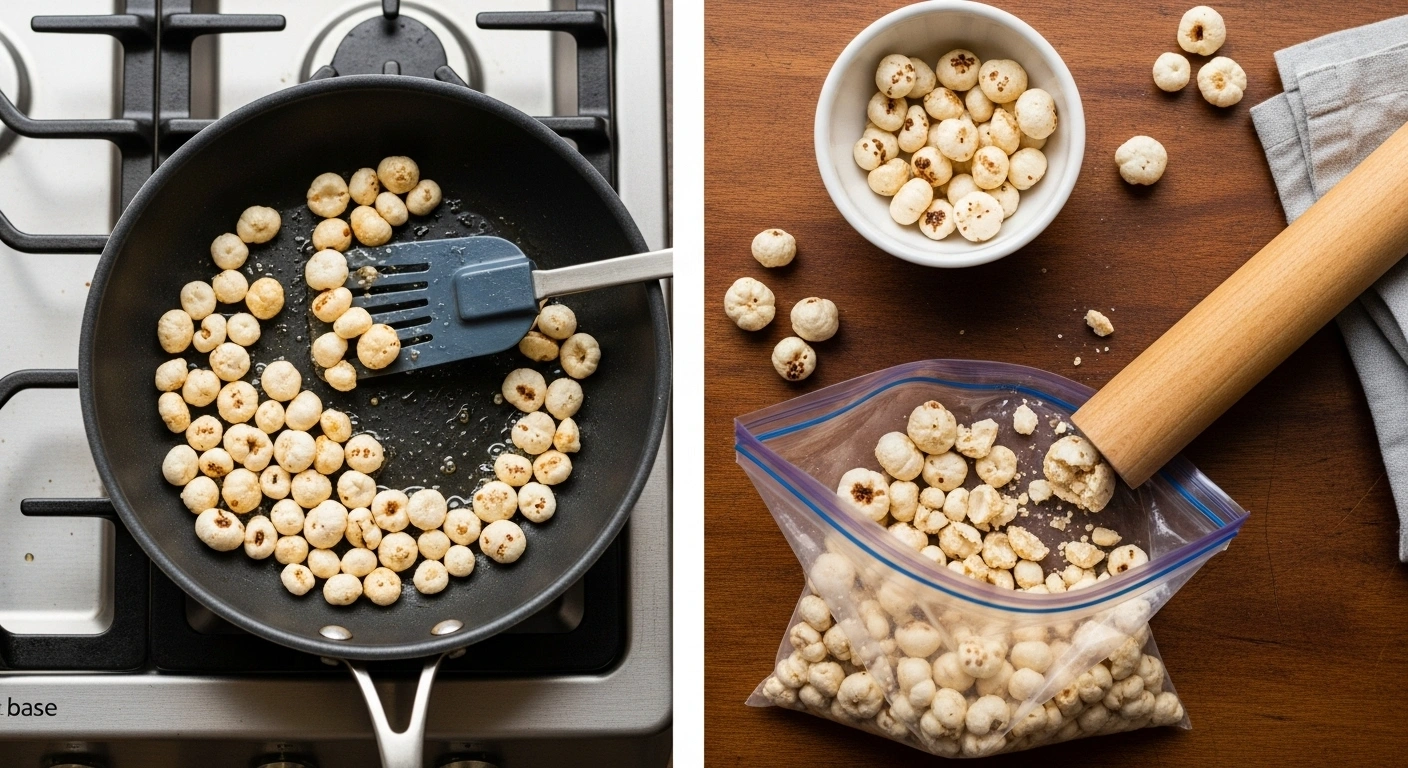
Prepare the Milk Base
Heat milk in the same cookware over medium-high heat.
Once it comes to a boil, reduce the heat to low.
Add saffron strands and simmer, stirring occasionally, until milk reduces to about half (15–20 minutes).
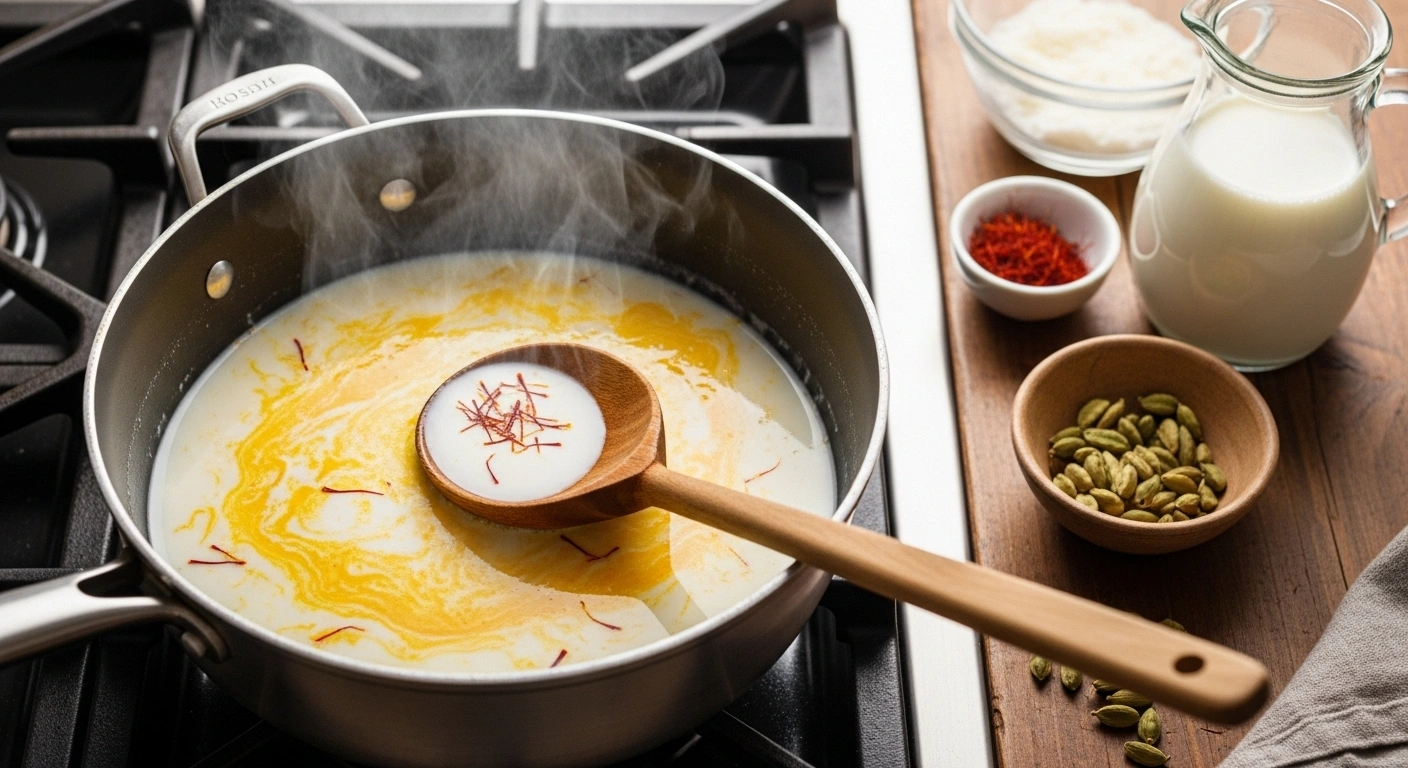
Cook the Phirni
Add crushed makhana to the milk and cook, stirring often, until the mixture thickens to a custard-like consistency (15–20 minutes).
Stir in sugar and cardamom powder, cooking for another minute. Adjust sugar if needed.
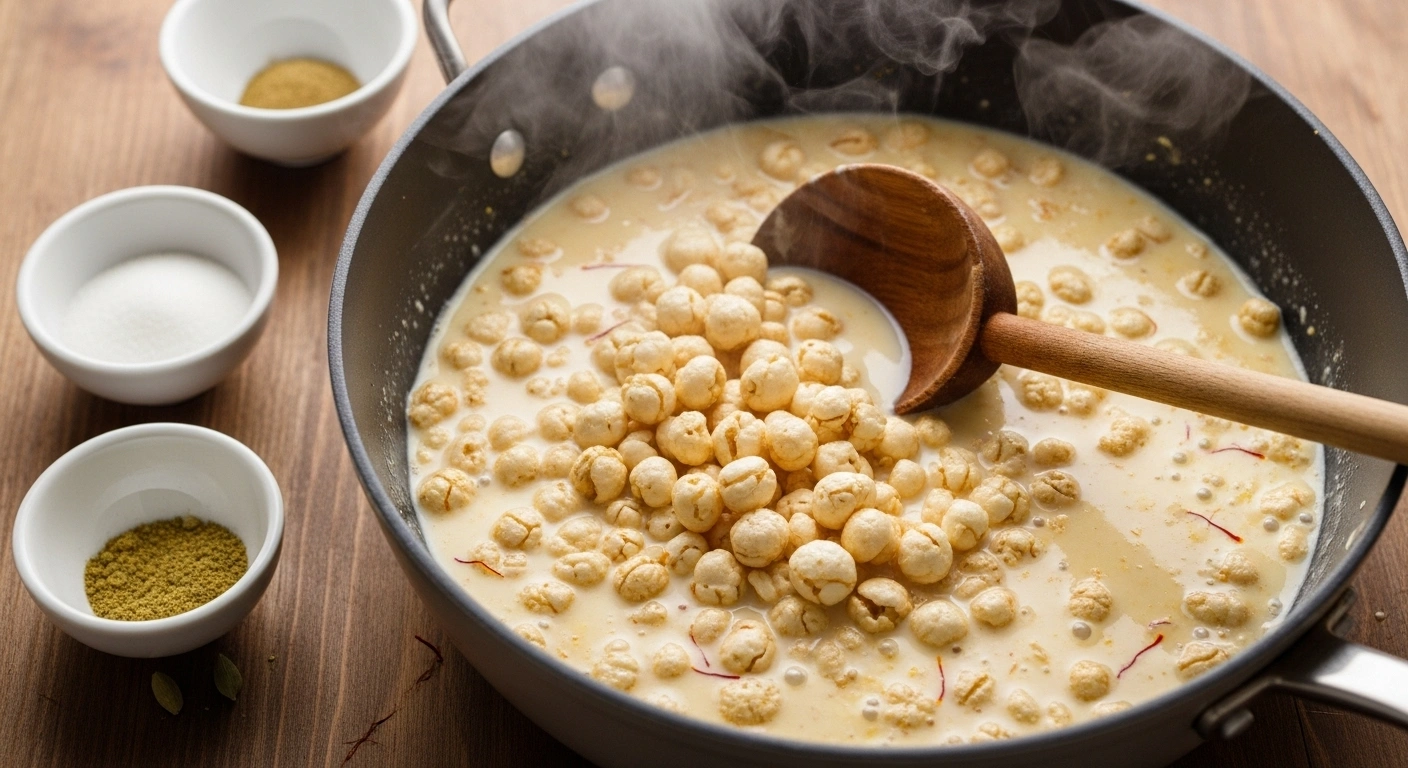
Chill and Serve
Remove from heat and transfer phirni into clay serving bowls.
Chill for 3–4 hours.
Garnish with almond and pistachio slivers before serving.
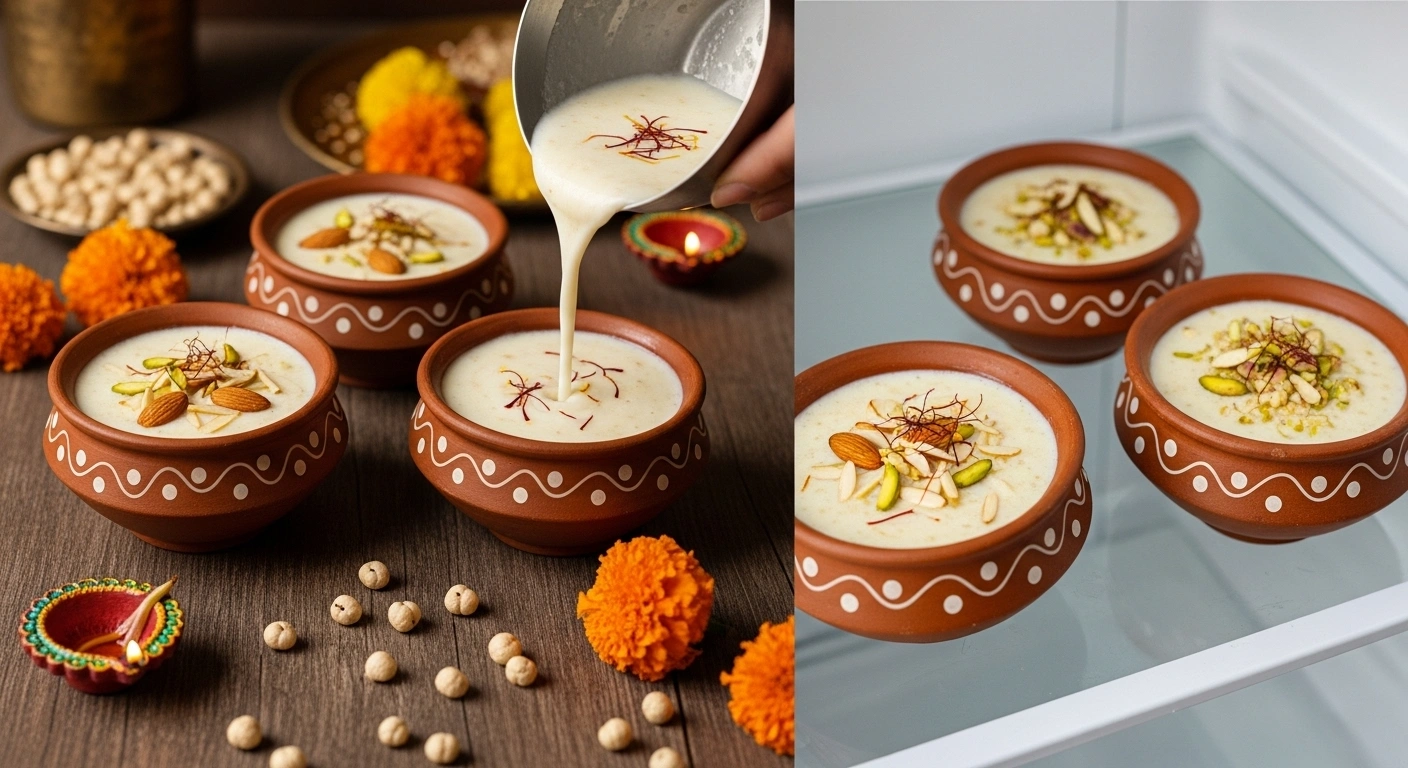
Texture Control: Crush the makhana finely for a smoother phirni or leave it coarse for a nuttier bite.
Extra Creaminess: Add 2 tbsp of condensed milk along with sugar for a richer taste.
Clay Bowl Advantage: Serving in clay bowls gives the dessert an earthy aroma and keeps it cool longer.
Yes, but add jaggery after removing from heat to prevent curdling.
Yes, but saffron gives the dish its signature golden hue and aroma.
Traditionally, it’s served chilled, but it can also be enjoyed warm in winters.